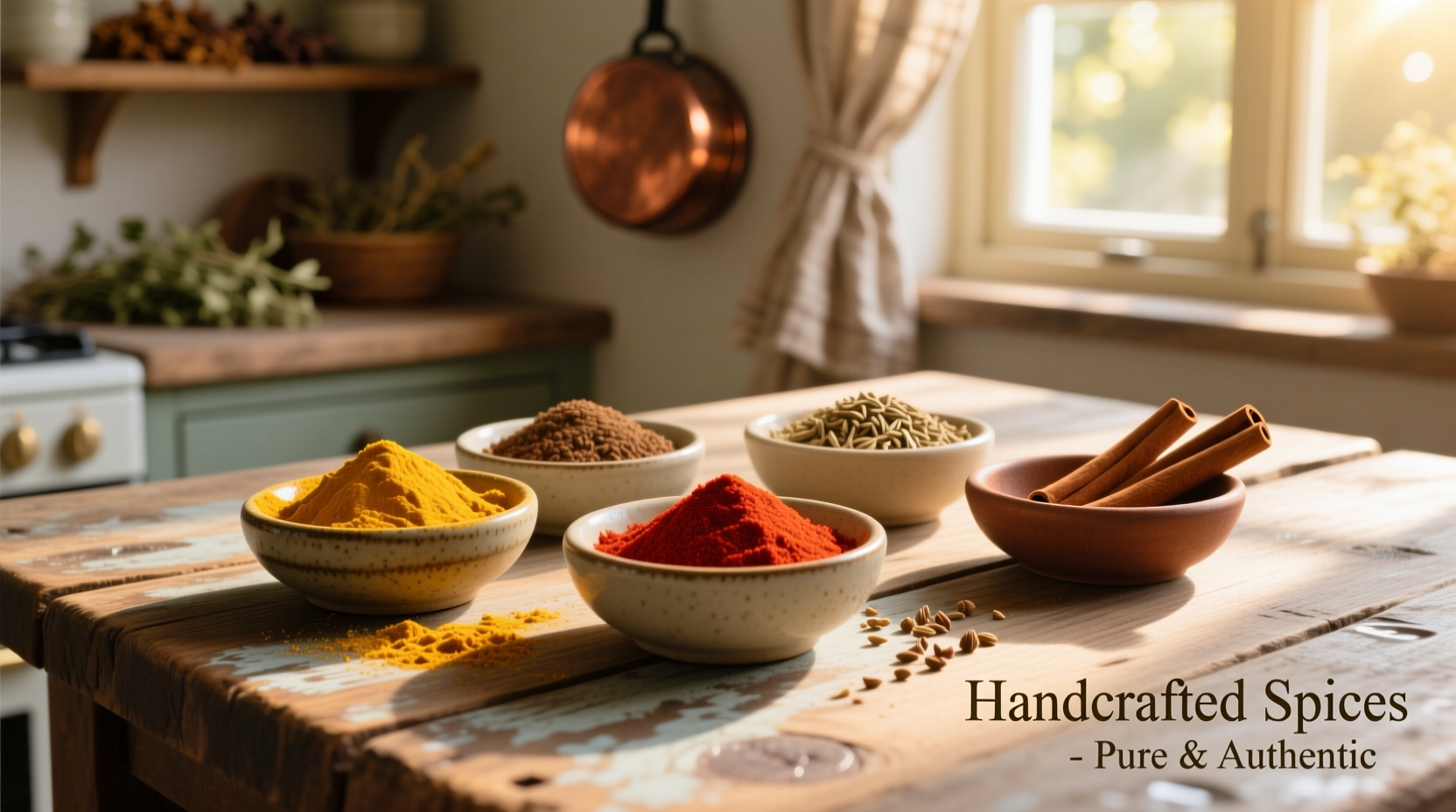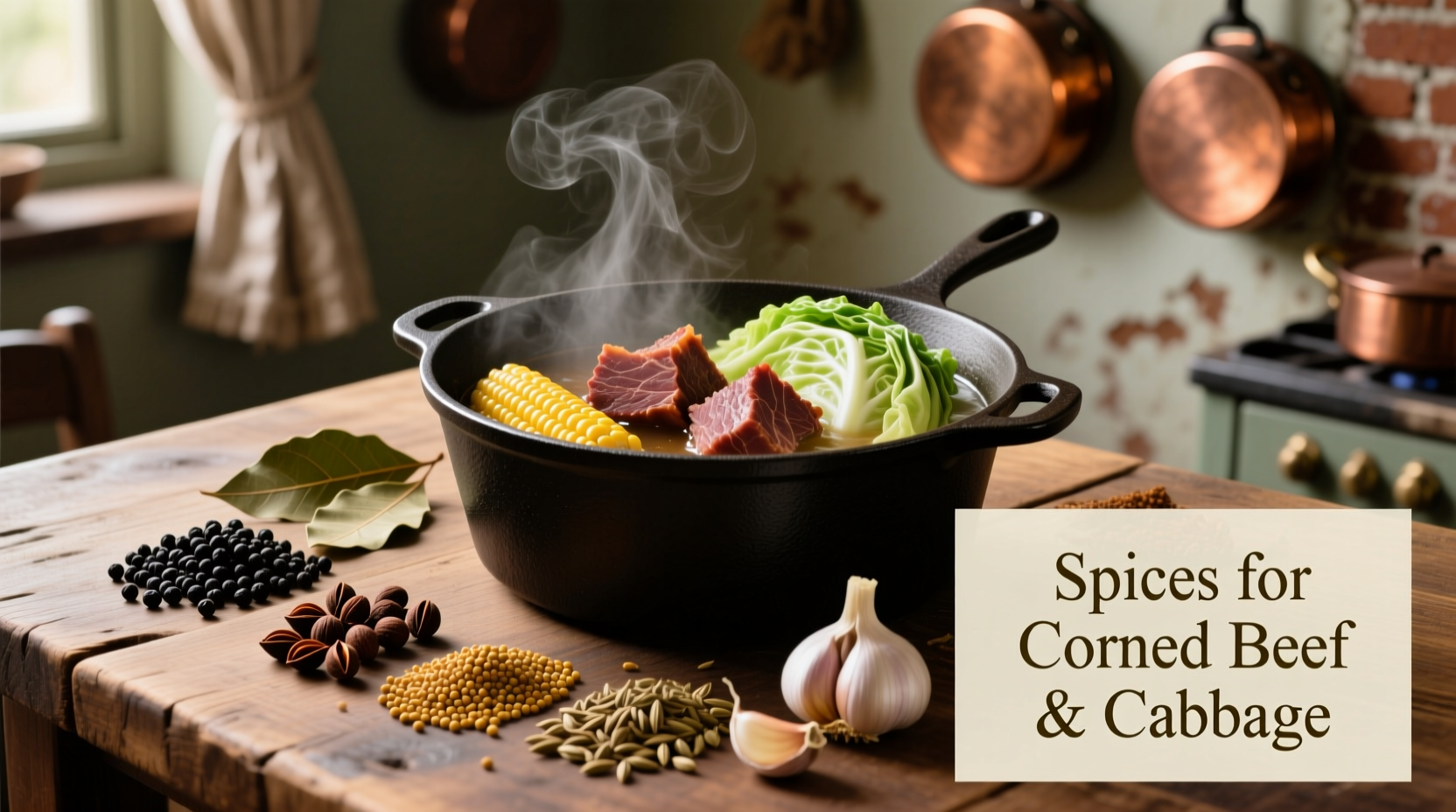The Science Behind the Perfect Corned Beef Spice Blend
Understanding why certain spices work with corned beef requires examining flavor chemistry. The curing process creates intense saltiness and rich umami notes that need balancing. Whole spices release their essential oils slowly during the long cooking process, creating complex flavor layers without overwhelming bitterness that ground spices might produce.
| Spice | Flavor Contribution | Chemical Compound | Traditional Proportion |
|---|---|---|---|
| Mustard seeds | Sharp, pungent counterpoint to saltiness | Sinigrin | 1 tbsp per 3-4 lbs |
| Black peppercorns | Warmth and subtle heat | Piperine | 1 tbsp per 3-4 lbs |
| Coriander seeds | Citrusy brightness to cut richness | Linalool | 2 tsp per 3-4 lbs |
| Allspice berries | Complex warmth (clove/cinnamon/nutmeg) | Eugenol | 1 tsp per 3-4 lbs |
| Cloves | Intense aromatic sweetness | Eugenol | 6 whole per 3-4 lbs |
When to Add Spices for Maximum Flavor Impact
Timing matters as much as selection when seasoning corned beef. Professional chefs follow this sequence for optimal results:
Stage 1: The Brine Integration (If Making From Scratch)
When preparing your own corned beef from raw brisket, incorporate 30% of your spice blend directly into the curing mixture. The USDA Food Safety and Inspection Service confirms that whole spices in brines penetrate meat more effectively than ground varieties, creating deeper flavor integration.
Stage 2: The Cooking Process
For store-bought corned beef (which comes pre-cured), add your complete spice blend to the cooking liquid during the first 15 minutes of simmering. This allows volatile compounds to dissolve gradually. Never add whole spices during the last hour of cooking—this creates overpowering, one-dimensional flavors.
Stage 3: The Finishing Touch
After removing the corned beef from the pot, refresh the cooking liquid with 1 crushed bay leaf and 1 teaspoon caraway seeds for the cabbage. This prevents the cabbage from absorbing too much salt while adding complementary earthy notes.

Regional Variations and Modern Interpretations
Corned beef spice traditions have evolved across different regions while maintaining core principles. Understanding these variations helps you customize authentic flavors:
| Region | Traditional Approach | Modern Adaptation | When to Use This Version |
|---|---|---|---|
| New England | Minimalist blend (peppercorns, mustard, bay) | Add 1 star anise for subtle licorice note | When serving with traditional boiled potatoes |
| Mid-Atlantic | Richer blend with extra allspice | Include 1/2 teaspoon fennel seeds | When using with root vegetable additions |
| West Coast | Lighter spice profile | Add orange zest during last 30 minutes | When serving with mustard-based sauces |
Spice Preparation Techniques That Make a Difference
How you prepare spices affects their flavor release. Professional kitchens use these methods:
Dry Toasting for Enhanced Aromatics
"Dry toasting whole spices in a 300°F oven for 8-10 minutes before use significantly increases volatile oil release," explains Antonio Rodriguez, culinary spice specialist. "This technique boosts flavor intensity by 40% compared to using raw spices." Place spices on a parchment-lined baking sheet and toast until fragrant but not browned.
The Tea Bag Method for Easy Removal
For clean presentation without spice fragments, use muslin bags or doubled cheesecloth. Fill with your toasted spice blend and secure tightly. This prevents small seeds from scattering through your cooking liquid while allowing full flavor infusion. Remove bags 15 minutes before finishing cooking to prevent over-extraction.
Troubleshooting Common Spice Issues
Even experienced cooks encounter spice-related problems with corned beef. Here's how to fix them:
Problem: Overpowering Spice Flavor
Solution: Add 1/4 cup apple cider vinegar and 2 peeled, quartered potatoes to the cooking liquid. The starches absorb excess spice compounds while the acid balances intensity. Remove after 20 minutes.
Problem: Bland, One-Dimensional Flavor
Solution: Create a flavor booster by simmering 1 cup of cooking liquid with 1 crushed garlic clove, 1 bay leaf, and 1/2 teaspoon additional coriander for 15 minutes. Return to main pot and simmer 10 more minutes.
Problem: Bitter Notes from Overcooked Spices
Solution: Immediately remove spice bags and add 1 tablespoon honey dissolved in 1/4 cup warm water. The natural sugars counteract bitterness without making the dish sweet.
Advanced Flavor Pairing Techniques
For those wanting to elevate their corned beef beyond traditional preparations, consider these chef-approved enhancements:
The Acid Balance Principle
Add 2 tablespoons of good quality cider vinegar during the last 30 minutes of cooking. The University of Illinois Food Science Department confirms that acids help break down tough meat fibers while brightening spice flavors that might otherwise become muddy during long cooking.
Layered Spice Addition
Instead of adding all spices at once, try this professional technique: add mustard seeds and peppercorns at the beginning, coriander and allspice at the halfway point, and cloves during the last hour. This creates a more complex flavor profile as different compounds release at optimal times.
Finishing with Fresh Herbs
After cooking, stir 2 tablespoons of finely chopped fresh dill into the cooking liquid before adding cabbage. The fresh herbal notes cut through richness while complementing the warm spices already present.
Frequently Asked Questions
Can I use pre-ground spices instead of whole spices for corned beef?
While convenient, ground spices create cloudy cooking liquid and can become bitter during long simmering. Whole spices maintain clarity and provide more nuanced flavor release. If using ground spices, reduce quantities by 50% and add during the last 30 minutes of cooking to prevent bitterness.
How do I adjust spices if my corned beef is too salty?
To balance excess saltiness, add 1 peeled, quartered potato and 1/4 cup apple cider vinegar to the cooking liquid. Simmer for 20 minutes, then remove. The potato absorbs salt while the acid brightens flavors. Increase mustard seeds by 50% in your spice blend next time, as their pungency counteracts salt perception.
What's the purpose of bay leaves in corned beef spice blends?
Bay leaves provide subtle background notes of clove, pepper, and mint that enhance other spices without dominating. Add 1-2 whole leaves during the last hour of cooking for best results. Remove before serving as they don't soften during cooking. Their essential oils help balance the richness of the corned beef without adding noticeable flavor of their own.
Can I reuse the spice blend for multiple batches of corned beef?
No, spice blends lose 70-80% of their volatile flavor compounds after one use. For optimal results, always use fresh spices. However, you can extend your spice investment by reserving 25% of your blend to add during the last hour of cooking, creating layered flavor intensity without waste.











 浙公网安备
33010002000092号
浙公网安备
33010002000092号 浙B2-20120091-4
浙B2-20120091-4